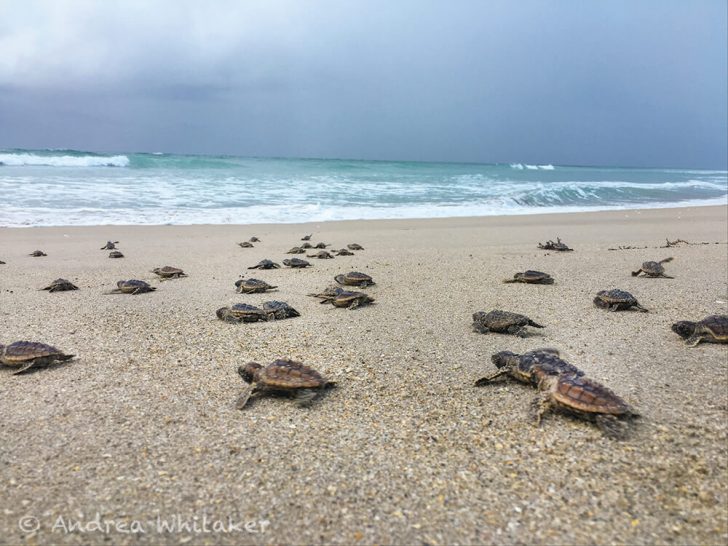
Every year, thousands of sea turtles wander up South Florida’s sandy beaches to build nests and lay eggs. Our shorelines are an essential habitat for future generations of many species of sea turtles, including loggerheads, greens, hawksbills, leatherbacks and Kemp’s Ridley. Sea Turtle season begins in South Florida in early March and lasts until the end of October.
Loggerheads are by far the most popular species to visit our beaches. The southeastern U.S. is home to the largest nesting aggregation of loggerhead sea turtles in the entire world. Palm Beach County hosts more loggerhead nests per square mile than anywhere else in the world.
Sea Turtles carry out their nesting practices nocturnally. Females with fertilized eggs swim ashore, slowly scooting their way up the beach and away from the waterline. Occasionally, these turtles will feel uncomfortable releasing their eggs and head back into the water to explore a new section of beach. These instances create a “false crawl,” which can be identified by turtle tracks that form a U shape, leading up the beach and then back down into the water with the absence of a nest.
Once a female turtle has reached a desired spot on the beach and deems it safe to create her nest, she will utilize her strong, paddle-shaped flippers to dig a hole, into which she will release eggs. Generally, sea turtles lay around 100 eggs per nest. Before returning to the water, the turtle uses her flippers to fill in the hole and cover her eggs with sand.
After 60 to 90 days in the nest, depending on species, the baby, or “hatchling,” turtles will emerge from their soft shells and dig their way out of the nest. Hatchlings often emerge at nighttime and are guided naturally into the water by waves and ambient moonlight reflecting off the ocean.
Throughout much of South Florida, sea turtle nesting season puts into practice “lights out” along the beach. Too much ambient light from populated areas along the beach can disorient baby turtles and cause them to move in the wrong direction, away from the water.
Most of the sea turtle species that nest along our Florida beaches are already endangered, so it’s important to minimize any negative impacts that our presence may have on them. Pick up any trash or discarded marine supplies you see along the shoreline when you visit the beach.
If you come across a sea turtle nesting, keep a good distance between you and the turtle, and keep lights and noise to a minimum.
Remember to fill in any holes that may have been dug during your time at the beach, and stay away from sea turtle tracks and marked nests.
You can learn more about sea turtles and their nesting habits during Pura Vida Divers’ June Social Night, or by completing a PADI Sea Turtle Awareness Distinctive Specialty. Visit our website for a full list of upcoming events at www.puravidadivers.com, or call the shop to sign up for an upcoming class: 561-840-8750.